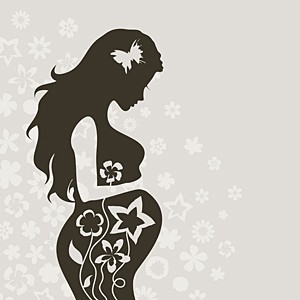
UC Research Explores the Cultural Mythologies of Pregnancy
Morning sickness, shiny hair and bizarre and intense cravings for pickles and ice cream what expectations do pregnant women impose on their bodies, and how are those expectations influenced by cultural perspectives on pregnancy? University of Cincinnati researcher Danielle Bessett, an assistant professor of sociology,
presents her research on Aug. 10, at the 108th annual meeting of the American Sociological Association in New York, N.Y.
Although previous surveys have indicated that women turn to medical sources to find out what to expect when theyre expecting, Bessetts research, titled Expecting Embodiment: Pregnancy Symptoms and the Cultural Mythologies of Pregnancy, found that pregnant women are strongly influenced about their pregnancies by common hearsay in their social circles and in media. Bessett calls this phenomenon pregnancy mythologies fragmentary, contradictory and elusive forms of knowledge.
Some drew heavily from ethnic-religious traditions, while others had little or no personal experience with pregnancy, says Bessett. Some had complicated reproductive histories. Depending on these varied biographical and structural locations, women affirmed, grieved, critiqued and contested key aspects of pregnancy mythology, Bessett says, adding that all women interviewed confronted mythologies in pregnancy.
Bessett says most women tended to minimize the influence of the pregnancy mythologies when asked directly about information sources they trusted most. It was only when pushed to explain how they came to hold specific expectations for what would happen during their pregnancies that women referenced media sources. Indeed, women often found themselves without an explanation for how they learned about what normally happened in pregnancy.

Danielle Bessett
In her interviews, Bessett found that some women were alarmed when they werent experiencing symptoms popularly associated with pregnancy, such as morning sickness, fearing that something might be wrong with the health of the fetus.
Whether pleasurable, inconvenient or debilitating, pregnancy symptoms are not simply treated as pregnancy side-effects in our culture, but rather as a significant connection to fetus and fetal subjectivity, writes Bessett.
For example, one mother said that her intense vomiting resulted because her baby didnt like what she ate. Another explained that her craving was due to her baby liking fried chicken.
Many symptoms were frequently seen as tangible manifestations of the fetuss desires, needs or personal characteristics, writes Bessett.
While issues such as nausea, cravings and labor pain were prominent in mythology, Bessett says that other ailments such as exhaustion, insomnia, gas, headaches and swollen ankles werent as popularly linked or discussed.Whether because they are somewhat rare (like pregnancy-related nosebleeds) or because they concern parts of the body that are not polite to talk about (such as hemorrhoids), these symptoms are not typically portrayed in media narratives on pregnancy, nor were they symptoms that friends and family frequently shared with women in advance of their pregnancy, writes Bessett.
Bessett concludes that, We may underestimate the extent to which all of us bring understandings of pregnancy built incrementally through a succession of ephemeral encounters over our lifetimes and the extent to which those understandings affect us.
Study Participants
The findings from the study came from interviews with 64 pregnant women in the greater New York metropolitan area from 2003-06. All participants were enrolled in prenatal care at the time of the interviews. Just over half of the participants were expecting their first birth. Twenty-three of the participants sought care from public, hospital-based clinics, while the other participants received care from private practices. The women represented a range of socioeconomic and racial/ethnic backgrounds, yet patterns of their expectations in regard to pregnancy were similar.
Just over half of the women interviewed identified as white; 12 as black; 14 as Hispanic/white and two as Hispanic/black. Two women identified as Asian and one identified as other/mixed race. The sample was economically diverse, with a third of the women reporting household incomes of under $40,000 and just under half reporting $80,000 or higher.
Participants agreed to at least two interviews one before and one after birth, yet most participants took part in three interviews.
Bessett is planning on eventually publishing the research in a book.
The research was supported by funding from a National Science Foundation Dissertation Improvement Grant; the Dr. Mary P. Dole Medical Fellowship from the Mount Holyoke College Alumnae Association; and the Charlotte Ellerston Social Service Postdoctoral Fellowship in Abortion and Reproductive Health.
Related Stories
Exploring careers in robotics engineering: A path to the future
March 28, 2025
Discover robotics engineering careers: skills, paths, and opportunities in manufacturing, healthcare, and space. Explore salaries and how to start at UC’s CEAS.
President Pinto shares search update for executive vice...
March 25, 2025
President Neville Pinto shares search update for executive vice president for academic affairs and provost
Ohio takes steps to stop spread of invasive pear trees
March 21, 2025
WLWT talks to UC biology Professor Theresa Culley about Ohio's ban on the sale or planting of nonnative and invasive pear trees. The trees are showing up in many parks and wild areas where they are crowding out native species.
